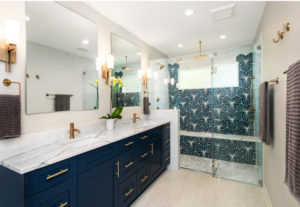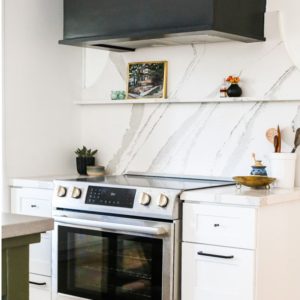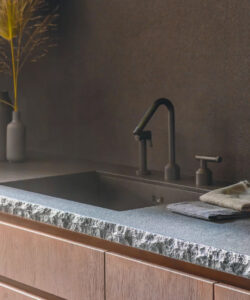These walk-in shower ideas and expert tips will inspire you to create a wet room bathroom, even in a small space
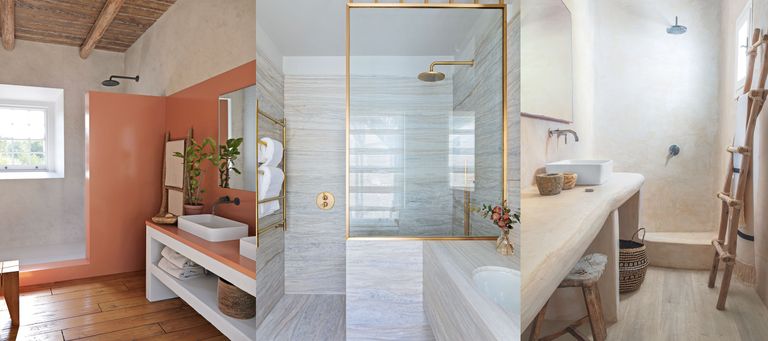

Walk-in shower ideas will inspire you to introduce a luxurious shower to your bathroom – no matter the size of the space or your budget.
Acting as a hybrid between an open-plan wet room and fully-enclosed shower cubicle, a walk-in shower offers easy, low-level access and a luxuriously spacious showering area.
Whether you’re looking to create a statement space on a small footprint or want help choosing bathroom ideas for a more spacious room, these statement enclosures and different walk-in showers ideas are sure to provide plenty of inspiration.
WALK-IN SHOWER IDEAS
A walk-in shower has no door but does include at least one shower screen. Walk-ins come in two main styles:
- A single entry has access at one end, and is great for installing in a corner or alcove.
- A double entry, or walk-through, is designed to be sited centrally and can be accessed from either end.
1. USE LUXURIOUS MATERIALS TO CREATE A STATEMENT WALK-IN SHOWER

There are few materials that can create the feeling of opulence in bathroom design that marble can. Elegant, understated and effortlessly beautiful, marble is usually used in luxury bathrooms to create a statement finish, and although it is an expensive investment, it is a look that will last a lifetime.
Consider the use of marble bathroom ideas carefully for spaces where you are using it in swathes because no slab of marble is the same as another. ‘What I love most with marble is the activity and coloration,’ says interior designer Cara Woodhouse.
‘I also adore the fact that all stones are different and have their one of a kind unique colors and veining. However, I always suggest going to a stone or tile showroom or a stone-yard to view full slabs before choosing your final stone.’
2. BUILD A WALK-IN SHOWER BENEATH THE EAVES OR AN ALCOVE

When planning a walk-in shower layout in a loft or attic room, make sure you position the shower where the room is at full height. It’s surprising how little space is needed – and what can be achieved by building a walk-in shower under the eaves.
Be sure to check that your floor joists are up to the job. If planning a walk-in shower or looking at wet room ideas, make sure the room is tanked to prevent leaks.
3. OPT FOR A COMPACT CORNER SHOWER

Placing a walk-in shower in a tucked away corner is a smart option for busy households, where the master bathroom needs to be used by everyone. Consider walk-in shower ideas with a sunken shower tray or a complete wet room if you have children or live with anyone with mobility issues, to prevent any trips.
Although small, the space above certainly isn’t dull. Opt for dark and moody metro tiles, or veined marble for a five-star boutique hotel aesthetic. The feather jacket is optional…
4. THINK OUTSIDE THE BOX WHEN IT COMES TO LAYOUT

If you have a fairly large space to devote to a walk-in shower room, then we suggest going for a substantial – and statement – design when planning your bathroom layout.
This rather large walk-in shower really commands attention. Featuring double entry, twin shower heads and marble surrounds with recessed shelving, this luxurious design really is a showstopper.
5. ADD A STEP UP TO THE SHOWER

Walk-in showers look great with a flush shower tray, which creates a seamless and streamlined appearance. You can also go for a traditional wet room style floor, where you tile the floor of the walk-in shower. However, you will need to ensure your room is completely watertight. This can be a significant upheaval, not to mention costly, too.
Alternatively, a step up to your walk-in shower adds an extra dimension – and will act as a zone to differentiate the space in your bathroom.
6. CHOOSE A FEATURE BACKSPLASH

There’s no greater example of how bathroom planning and interior design have become intertwined than the backsplash. And no, the bathroom backsplash isn’t just for the kitchen – it can make for an intriguing look in the bathroom, too.
‘A backsplash is a key decision in a project, especially in a bathroom,’ explains Alex Beaugeard, design director at McCarron & Co. ‘As vertical surfaces, they carry significant design weight, and there is a real appetite to experiment at the moment. I’m seeing artwork installed behind glass and resin bronze, as well as bathroom wallpapers.’
No matter what material you choose for your backsplash, be sure to make the most of it visually. Maximize the area of wall space for your backsplash, and use clever bathroom lighting ideas to help highlight subtle sparkle or delicate details hidden within the surface.
7. USE COLOR IN A SMALL WALK-IN SHOWER

Don’t be afraid to use color in a small wet room or walk-in shower room. A good bathroom color scheme is essential for creating the look, feel and design you want in your space – and you can use everything, from tiles and sanitaryware to accessories, to create a unique look.
Adding a bright and beautiful – or dark and dramatic – hue to your walk-in shower will really lift your whole home, bringing this functional space in line with the rest of your decor.
8. GO FOR A STATEMENT TILES

Embracing strong bathroom colors can produce joyful results. While the tiles may be dramatic, the overall scheme can be timeless if you choose a color that truly resonates. Unsurprisingly, sunshine yellow is an obvious choice for this walk-in shower room.
‘Boldly colored and patterned tiles can add such personality, dynamism and impact to walk-in showers, really lifting the space,’ enthuses Caz Myers, director, Caz Myers Design.
9. WORK WITH SEAMLESS GLASS DOOR FRAMES
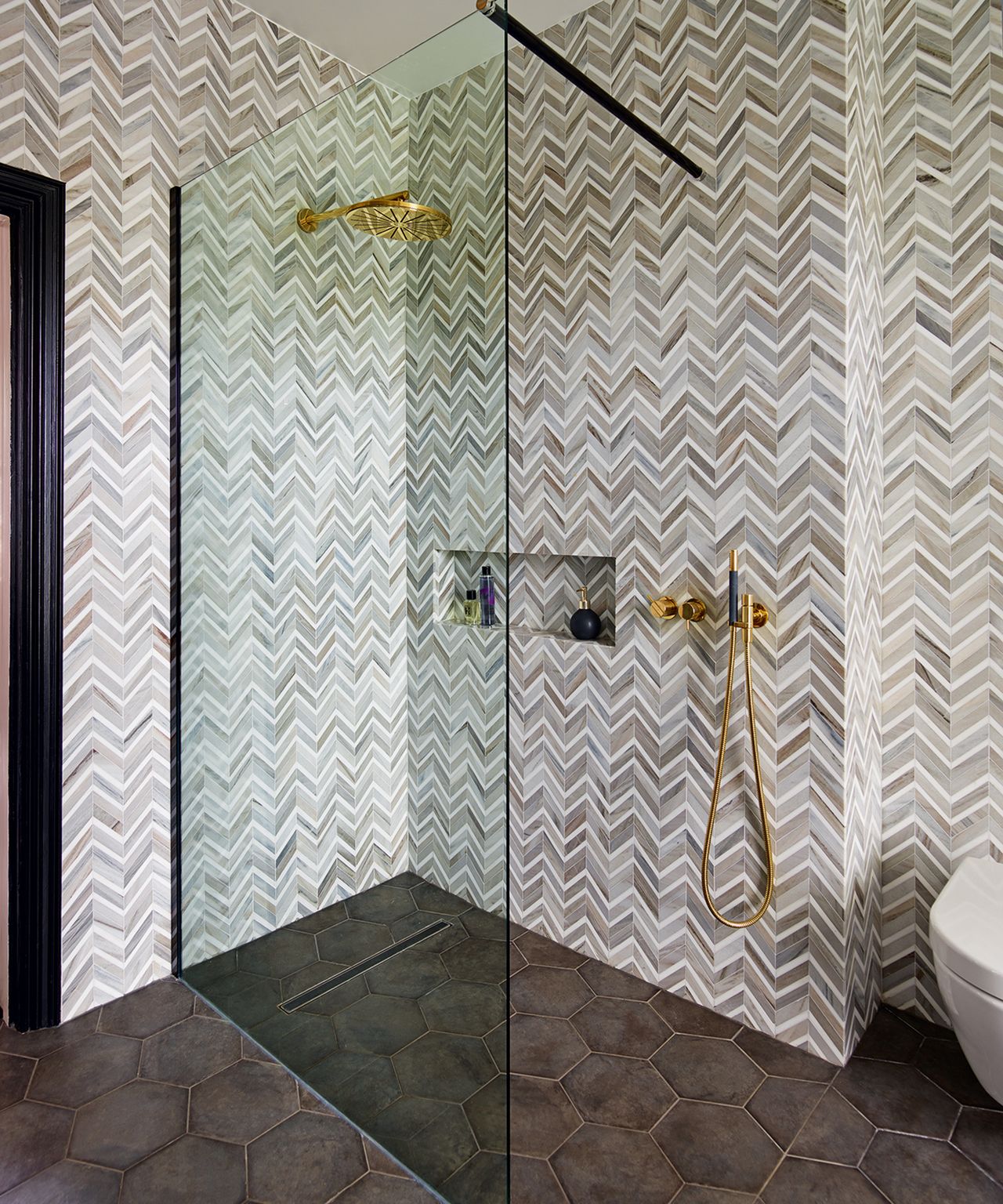
Don’t opt for a dated, step-in enclosure. Instead look for walk-in shower ideas with ultra-clean lines, and minimalist styling with a sleek glass screen. Invest in the slimmest frames you can afford (frameless, if possible) and thick glass.
Paired with a flush floor these frameless, clear glass panels help to make even the smallest of spaces feel less claustrophobic and therefore a more calming showering experience.
10. ADD INTEREST WITH A PATTERNED TILE

Much like paint effects, the walk-in shower tiles you choose can alter the look of a room, making it feel bigger than it actually is or adding visual interest to a dull space. However, unlike paint, tiles can be a costly expense, so it is vital that you get it right first time.
Bathroom tile ideas are endless, and it’s a great place to really show off your personality. But one thing to remember when it comes to floor tiles for a wet room is to go for a design with a raised matt finish, for an non-slip bathroom flooring.
11. INVEST IN LUXURIOUS ACCESSORIES

‘Team your minimalist enclosure with a statement shower head for a really boutique finish,’ suggests David Osbourne, managing director of Roman Showers. Oversized shower heads in square profiles are the latest bathroom trends and make a fantastic focal point.
‘Enhance the luxe factor with a three-way shower set, complete with spa-style jets,’ adds Bathroom.com’s Lucy Powell.
But remember to check that your water pressure is up to the task – some plumbing systems can be fitted with booster pumps to increase performance.
12. CHOOSE A GLASS SCREEN FOR A MINIMALIST LOOK

While some wet rooms are only just for showering, many people tend to include the WC, vanity and even the bath all in one room. This is where wet room screens come into their own.
‘Soggy towels, toilet rolls and flooded floors can be avoided, without losing that all-important openness in look and feel,’ says Nicholas. ‘Panels that integrate into the shower tray with no silicone sealant required are great for a barely-there, frameless look.
‘I always recommend going as wide as possible with a screen and including a hinged end panel for extra protection, especially if your water is high pressure.’
Pop a towel hook at the end to create a contained drying area before you leave the confines of the screen.
HOW MUCH DOES IT COST TO PUT IN A WALK-IN SHOWER?
How much a walk-in shower costs depends on the design and walk-in shower ideas you go for, the materials you use, and whether or not you need to have your space tanked.
A simple, tray and screen design can cost around $1,000 for a pre-fab unit – but if you are after a luxurious design, the prices go up from there. For something fully customized you could pay anywhere between $10,000 and $50,000.
You have to add in the cost of installation too. This depends on how much plumbing work you need doing, but it could cost between $2,000 and $5,000 if pipes need changing. You might have to add to that the cost of waterproofing the space, which will be around $2,000 plus. This will also depend on the size of your space.
If you are opting for a fully marble-clad design, expect to pay upwards of $50,000.
DOES A WALK-IN SHOWER ADD VALUE?
While adding a walk-in shower could get expensive, they are becoming an increasingly desirable way to add value to your home, and improve your quality of life.
Stealing a little bit of extra space can transform a bathroom with luxury proportions. Wet rooms and walk-in showers are becoming increasingly desirable, and they’re a great way to add value to your home.
ARE WALK-IN SHOWERS PRACTICAL?
Walk-in showers are an incredibly practical choice for a family bathroom. They are particularly good for busy households with children, people with disabilities, and the elderly. What’s more, they often take up less square footage than a bathtub, making them an ideal option for small bathrooms.
‘There are several benefits to having a walk-in shower,’ says Rebecca Milnes, C.P. Hart designer. ‘Due to the lack of a proper enclosure, you’ll be able to utilize a small or awkward corner where a bath or standard shower wouldn’t fit. By tanking the room you’re also future-proofing your home, as having waterproof surfaces will prove incredibly useful during bath time with small children.’
CAN YOU HAVE A WALK-IN SHOWER IN A SMALL BATHROOM?
Yes, you can create a walk-in shower design for a small bathroom – with careful planning. There are many reduced-depth shower trays available that can be installed at a low level for a step-free design.
Alternatively you could consider creating a wet room – this requires tanking (waterproofing) which can be a larger investment and upheaval.
Opting for a frameless shower panel is a useful idea for a small bathroom that can enhance the illusion of space. It provides a seamless look while still protecting other areas of the bathroom from getting wet.

